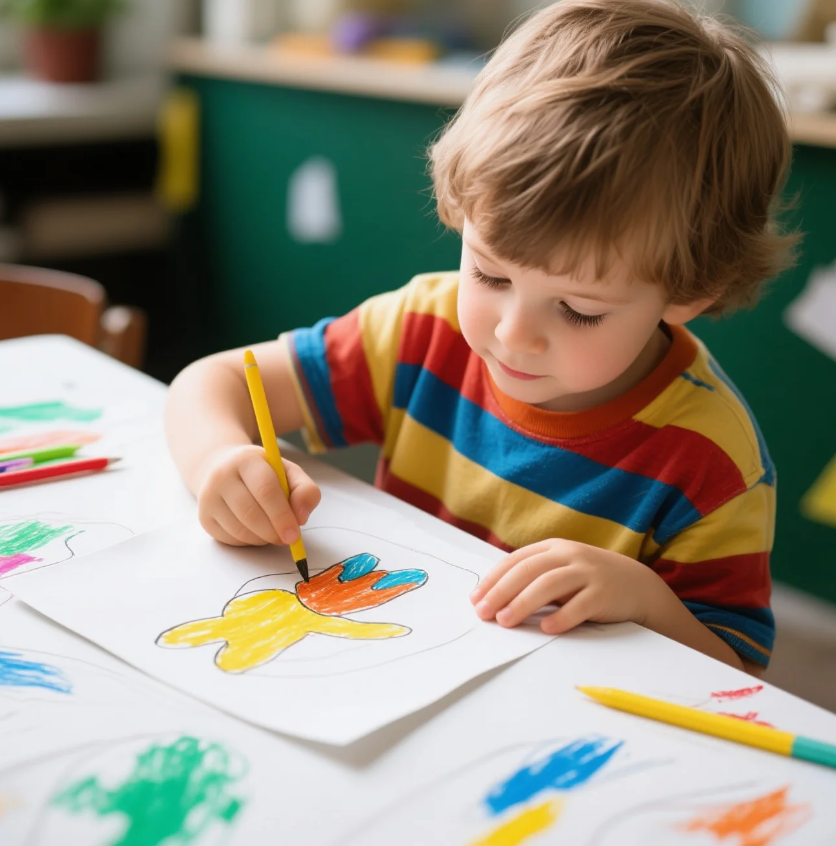Watching a baby discover the world is one of life’s most magical experiences. Each tiny smile, every curious gaze, and those tentative first grasps at objects are not just adorable milestones—they are the building blocks of brain development. Early childhood education experts emphasize that the brain develops at an astonishing pace during the first few years of life, making this period crucial for fostering cognitive, emotional, and motor skills. As parents, caregivers, and educators, providing enriching early learning activities tailored to a baby’s natural curiosity can profoundly influence their growth and future learning abilities.
A young mother shared how she transformed her daily routines into playful learning opportunities that seamlessly integrated with her baby’s natural rhythms. Instead of structured lessons, she found joy in simple moments—like naming colors of toys during bath time or singing lullabies that stimulated language acquisition. These activities tap into what neuroscientists call “brain plasticity,” the brain’s remarkable ability to form new connections in response to experiences. By engaging multiple senses—touch, sight, hearing—parents create rich environments where neural pathways flourish.
Movement plays a vital role in early development, and encouraging physical exploration nurtures both the brain and body. One father recounted how his baby’s excitement during tummy time evolved from restless fussiness to joyful discovery as he introduced colorful mats and soft mirrors. This combination not only strengthened neck and core muscles but also boosted spatial awareness and visual tracking skills, essential for later milestones like crawling and walking. Pediatric therapists agree that such activities promote fine and gross motor development while simultaneously stimulating cognitive processing.
Language development begins long before a child utters their first word, and exposure to rich, meaningful communication profoundly impacts vocabulary growth and literacy skills. A daycare provider described the power of “serve and return” interactions, where caregivers respond to a baby’s babbles and gestures with smiles, words, or gentle touch. This reciprocal exchange fosters emotional bonding and lays the groundwork for complex language abilities. Parents who narrate daily activities or read age-appropriate books regularly help build neural circuits associated with comprehension and speech, enhancing their child’s long-term academic success.
Sensory play stands out as a compelling way to spark curiosity and brain development. Whether through soft fabrics, textured toys, or gentle water play, sensory experiences help babies make sense of their environment. A grandmother fondly remembers introducing her granddaughter to different scents, like lavender and vanilla, during playtime, which not only soothed the child but also enriched her sensory awareness. These moments engage multiple areas of the brain, including those responsible for memory and emotional regulation, underscoring the importance of multisensory stimulation in early education.
Social interaction is another cornerstone of early learning. Even the youngest infants benefit from eye contact, smiling, and shared attention, which promote emotional intelligence and social cognition. An early childhood specialist observed how babies who receive warm, consistent social engagement tend to develop greater resilience and self-regulation. Family gatherings and playdates provide natural settings where babies practice these foundational skills, making early education a communal experience rather than a solitary one.
Nutrition and sleep, often overlooked in discussions about brain development, are indispensable partners in this journey. Proper nourishment fuels cognitive function, while quality sleep consolidates memories and supports overall brain growth. A pediatric dietitian advised parents to incorporate nutrient-rich foods like omega-3 fatty acids and iron into their child’s diet once solid foods are introduced. Meanwhile, establishing calming bedtime routines enhances sleep quality, which in turn facilitates optimal brain function during waking hours. These holistic approaches highlight how physical health intertwines with early education.
Technology, when used mindfully, can also supplement early learning without replacing human interaction. Interactive apps designed for babies that focus on colors, shapes, and sounds can reinforce skills learned through hands-on activities. However, a speech therapist cautions that screen time should be limited and always paired with parental involvement to maximize benefits. The key lies in balance—using digital tools as one of many resources to stimulate the brain’s evolving capacities.
Parents often share that witnessing their baby’s progress through simple activities fosters a profound sense of connection and fulfillment. A father reflected on how playing peek-a-boo not only delighted his infant but also taught object permanence, a foundational cognitive skill. These shared moments underscore that early education is not just about developmental milestones but about nurturing a loving relationship that supports lifelong learning.
As babies engage with the world through touch, sound, and movement, their brains sculpt intricate networks that serve as the foundation for thinking, problem-solving, and creativity. The magic of early education lies in transforming everyday experiences into opportunities for discovery and growth, all while embracing the unique pace and personality of each child. 🌱🧸




